Hardy and drought tolerant, the mgambo tree is a popular choice for people who want to grow a tropical plant that is highly decorative.
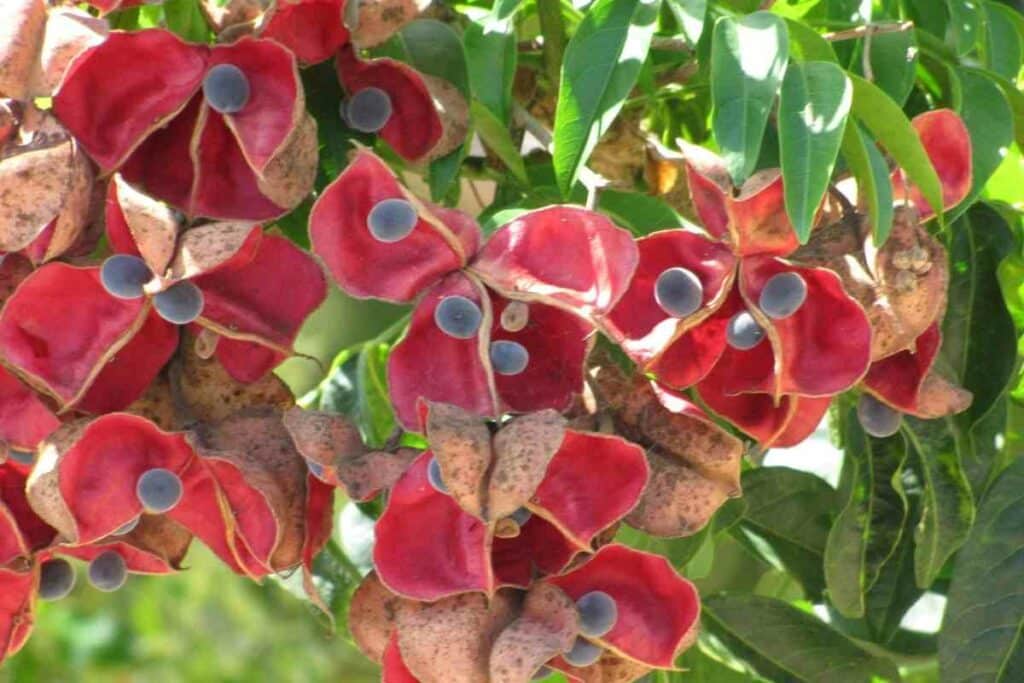
However, there isn’t a lot of information online about how to properly care for these trees so we have put together all the information you need to know.
What Is The Mgambo Tree?
Before we get into how to grow the mgambo tree, let’s get ourselves better acquainted with this exotic plant.
To call it by its real name, the Majidea zanguebarica is a tree that is part of the soapberry family. These trees are actually close relatives of things like the longan and litchi tree.
What’s amazing about the mgambo tree is how tall it can get. There are reports of these trees getting as tall as 80 feet in the wild, but we’ll look more at this later on.
Keep In Mind – It’s worth noting that the bigger your tree, the more pruning is going to be required so this is something worth thinking about before you get started.
The mgambo tree is normally found growing in lowland areas. It features compound leaves that have as many as ten pairs of leaflets on each leaf.
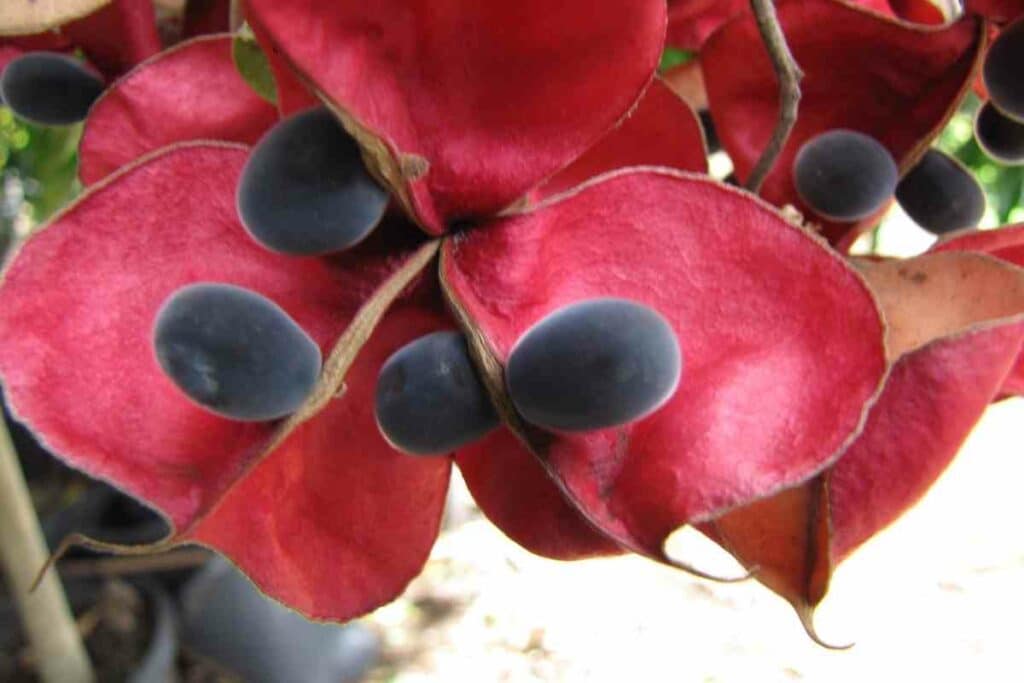
One of the things that makes these trees so attractive is the appearance of the leaves; they’re incredibly shiny and a rich green color.
You will also notice that the mgambo tree blooms beautiful flowers that are found at the tips of the branches.
While they’re quite small, their beautiful greenish hue with tinges of pinkish red are certainly unique and would make an excellent talking point.
What Makes Mgambo Tree so Special?
But the real stand out part of the mgambo tree are the seed pods; these are what really draw attention and are part of the reason that this tree is so well loved.
The pods have three sides and go through various color changes as they develop.
They’ll start with a light green hue which gradually melds into a tanned brown shade.
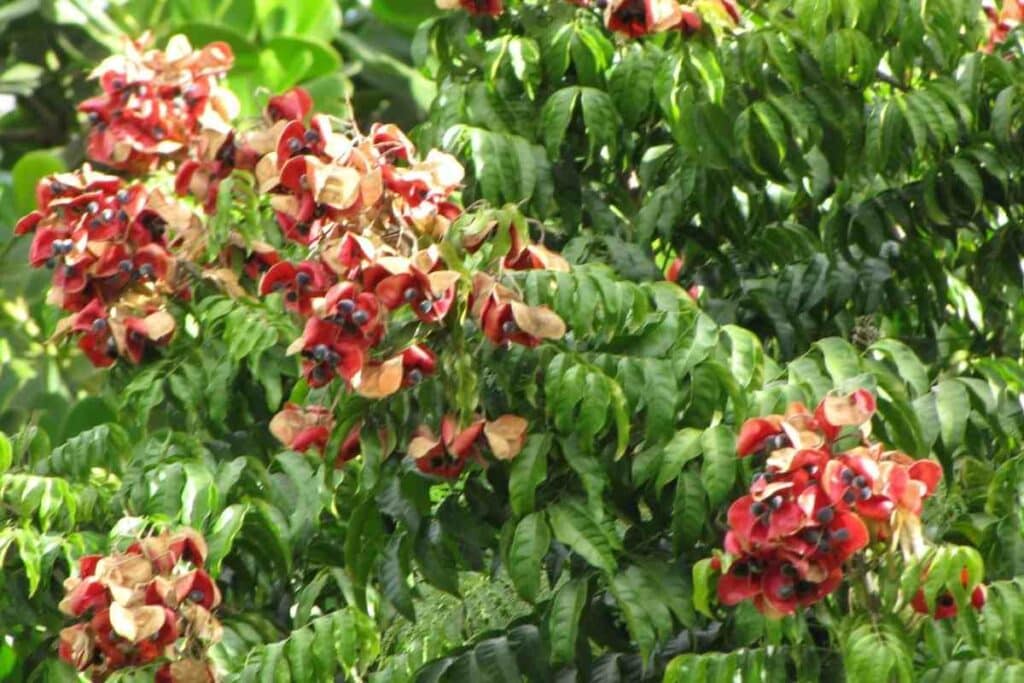
After this, the seed pods will burst open and the inside is a bright pink or red color which really attracts attention.
Inside the Pods – There are grey seeds covered in hairs and these are known as velvet seeds and are highly sought after.
There are many other names for the mgambo tree but this particular one comes from the Swahili language and translates to ‘proclamation’ or ‘announcement.’
When those seed pods pop open, it’s very easy to see what inspires this name.
However, you may also hear people calling it the black pearl tree, the velvet seed tree or the velvet seed pod tree.
How Big Does The Mgambo Tree Grow?
One of the things that growers must keep in mind when taking on a mgambo tree is that these trees can get very big indeed!
In the wild, some mgambo trees can get up to 80 feet in height!
That said, this is at the extreme end of things and you probably won’t end up with something that large.
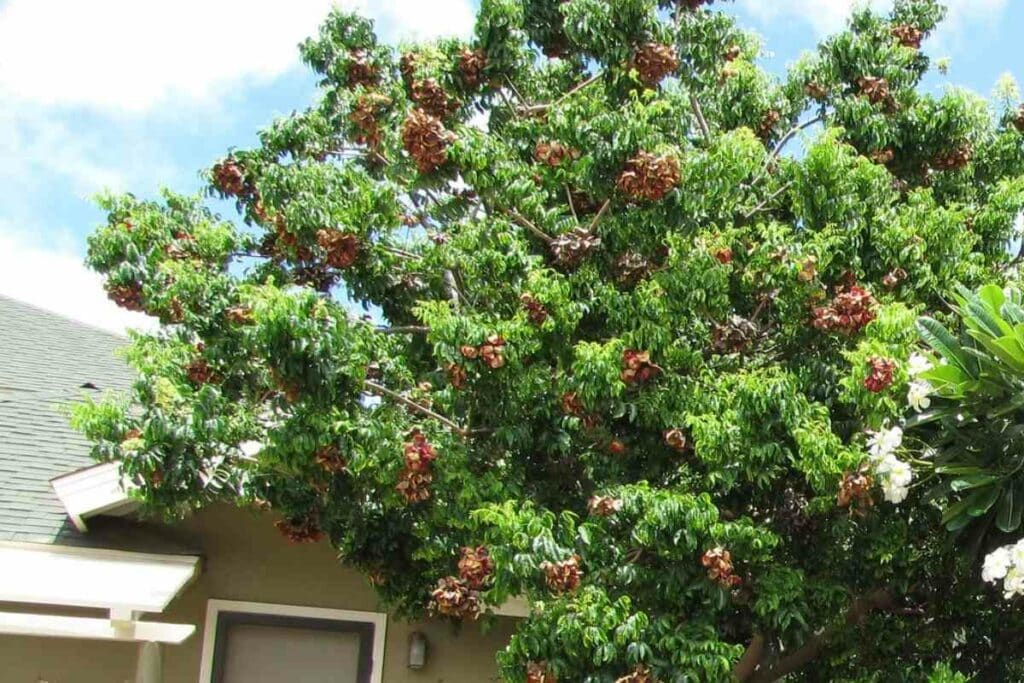
On the other hand, some mgambo trees don’t make it past six feet.
In All Reality – Your tree would be somewhere between these two extremes. The average height for a mgambo tree when growing in its native habitat is around 16 feet.
With all of that said, many people keep the mgambo as a bonsai. Bonsais are intentionally compacted trees that are kept in small containers.
They’re an excellent way to keep ornamental trees that would otherwise be much larger.
How To Grow Mgambo Tree From Seed
One of the best things about growing the mgambo tree from a seed is that you aren’t limited as to when you can plant it.
These trees can be started off at any time of year. That said, do keep in mind that they’re only hardy in frost free zones.
Before you plant the seed, you will need to soak them in water as this will aid in germination.
Typically speaking you will want to leave the seeds in lukewarm water for around 48 hours.
You will need to ensure that the soil is moist and once the seeds are in, cover it over with some glass or plastic foil.
This will ensure a consistent temperature and you’ll need to place the seeds indoors in a warm location.
What Are The Best Growing Conditions For The Mgambo Tree?
When growing any plant or tree, it is vital that you ensure the right conditions otherwise the tree is never going to thrive.
The mgambo tree is native to East Africa where the conditions are extremely different from most of the USA.
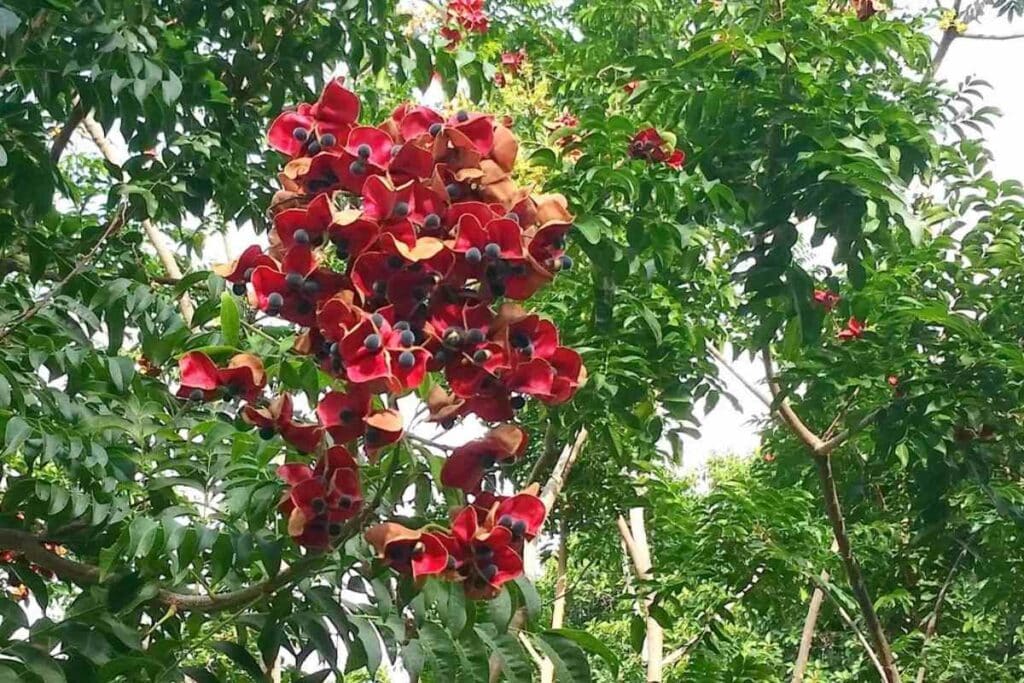
That said, you’ll find that these trees grow very well in zones 9 through 11.
These growing zones rarely, if ever experience frost. Even during the winter months, the temperatures rarely fall below 25 to 40 degrees fahrenheit and even this is extreme.
The mgambo tree is hardy in areas where there isn’t a frost but typically, you wouldn’t want to keep it in temperatures that regularly dipped below 50 degrees.
With all of the above in mind, you can quite easily grow mgambo as a bonsai in any zone since it will be kept indoors.
The mgambo tree does best when it is placed in full sun.
That said, I have read that some growers grow their trees in varying amounts of shade. A little is OK but the sunnier the spot, the better the tree will thrive.
The best type of soil for mgambo trees is one that is slightly more acidic. If the soil isn’t acidic where you live then there are things you can add to it to raise its acidity level.
This includes products like sulphur, compost, pine needle mulch or a liquid feed specially designed to raise acidity.
Watering Mgambo Trees
One of the things that make mgambo trees fairly simple to grow is that they are very tolerant to drought.
While this is true, that doesn’t mean that you should neglect to water your tree. After all, there is a limit and eventually it will begin to suffer.
The key to watering your mgambo tree is to make sure that the soil is kept moist. Check it every few days and water accordingly.

You’ll also want to make sure that you use a well draining soil. Although it needs to remain moist, any sitting water will cause damage to the roots of the tree.
Medicinal Properties Of The Mgambo Tree
As with many trees and plants, the mgambo tree is known for its medicinal properties.
One of the best things about the tree is that it is highly acclaimed for being an excellent natural antibacterial agent.
The pods and the leaves are bursting with antibacterial properties and this is one of the main uses of the tree.
Moreover, in East Africa, where the tree can be found growing natively, people use it for things like treating a fever, healing wounds and it’s great for dealing with gastrointestinal issues.
Of course, we would never advocate the use of natural remedies without first consulting a professional.
Other Uses For The Mgambo Tree
As well as being known for its healing properties, the mgambo tree is also used in a whole host of other ways.
For starters, the tree is highly prized for its natural materials that are often used in jewellery making.
You’ll find necklaces and bracelets that feature mgambo pods and seeds. The velvety seeds in particular are well sought after for this reason.
What’s More – When the fruit pods dry out, they’re a common feature in pot pourri mixes as well as flower arrangements. They have a very unique appearance that’s wildly pleasing to the eye.
While there is a lot of concern around the use of exotic wood in furniture making, there’s no denying that the mgambo tree can be used to make some beautiful pieces.
With a very fine grain, the wood has a beautiful finish that is often used for cabinetry.
Collecting The Seeds
Whether you want to collect the seeds for medicinal reasons or simply want to make the most of their decorative appearance, it’s important to know when to harvest them.
The great thing about the mgambo tree is that it typically fruits twice a year.
This normally happens in the fall but in late summer the delicate but highly fragrant flowers first appear.
These flowers are incredibly attractive to pollinators so it’s worth including an mgambo in your garden if you’re looking for more:
After this, during the first part of fall, the fruit will appear. Eventually, the pods will dry up and split open.
Inside, you’ll find those beautiful seeds which are sometimes called black pearls.
Many people choose to wait until this happens to collect the seeds but it is also possible to take the pods as soon as they start to lose their green color.
The benefit of this is that the seeds won’t be too dry and so they won’t need to be drilled, instead you can simply use a needle.
When picking seeds for things like jewelry making, be aware that those little hairs should not rub off the seed. If they do, it’s worth going for a different seed.
Conclusion
The mgambo tree is a stunning exotic tree that can get quite large.
It boasts delicate yet beautiful blooms and seed pods that burst open to reveal black pearls often used in jewelry making.
Growing these trees is considered to be easy to moderate but as long as you provide the right conditions, the mgambo is a pretty hardy tree.
What’s more, if you don’t live in the appropriate growing zones, you can still enjoy the mgambo tree since it is often used as a bonsai.
In any case, you’ll need to make sure that tree has slightly acidic, well draining soil and plenty of sunlight.


